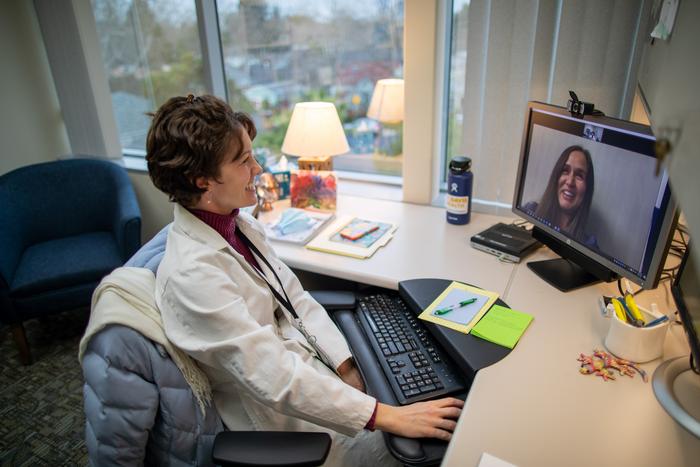Grocery stores, airports and beaches aren’t great places to have telehealth visits with your endocrinologist. But home can be one of the best locations, giving a doctor helpful insights into a patient’s home environment, which can positively impact their care.

Credit: UC Regents
Grocery stores, airports and beaches aren’t great places to have telehealth visits with your endocrinologist. But home can be one of the best locations, giving a doctor helpful insights into a patient’s home environment, which can positively impact their care.
This is just one finding shared in a new study published this week in The Journal of Clinical Diabetes.
Researchers interviewed clinicians and staff who provide diabetes care through telehealth across four University of California academic medical centers: UC Davis Health, UCSF Health, UCLA Health and UC San Diego Health. Researchers asked open-ended questions to learn how telehealth is used, challenges faced, helpful practices and plans for the future.
“These are critical and timely questions since telehealth remains an important way to provide care in the wake of the COVID-19 pandemic. But there is limited data about how to optimize it for specific types of care,” said Stephanie Crossen, UC Davis pediatric endocrinologist and senior author of the study. “We asked the people who have the most experience in this area to identify best practices which can be used, further studied, and refined moving forward.”
The study suggests several important strategies to improve telehealth operations:
- Dedicated staff support is essential to obtain data from patients’ devices (like remote glucose monitors) ahead of telehealth visits. This can improve access to care for individuals with limited digital literacy, save clinician time during visits and prevent unnecessary rescheduling of appointments.
- Efficient workflows around scheduling follow-up visits are needed to ensure people don’t experience lapses in care.
- Finding the best ways to facilitate team-based diabetes care is key. For a diabetes management telehealth visit, this may include a nurse, dietitian, social worker, pharmacist or educator, in addition to the primary clinician. It is important to create workflows that support this effort.
Interviewees also said telehealth visits can provide a good opportunity to review and discuss the impact of the home environment on diabetes self-care. Through screen sharing, clinicians can also review trends in a patient’s glucose data and discuss daily management successes or challenges.
Finally, those interviewed also noted the need for clear patient guidelines about appropriate timing and physical setting for joining telehealth visits to make them efficient and effective. For example, visits while driving or at a large group event were not advised.
“I hope the findings of our study will spark discussion around how we can optimize telehealth and take advantage of its unique capabilities to improve patient care, rather than trying to replicate the in-person visit,” said Sarah Haynes, assistant professor from the UC Davis Department of Pediatrics and lead author of the study.
Other study authors are Miriam Sarkisian of the UC Davis Center for Health and Technology; Aaron Neinstein and Polly Teng of UCSF’s Department of Medicine; Jenise Wong of UCSF’s Department of Pediatrics; and James Marcin of UC Davis Department of Pediatrics.
This study was supported by a research award from the Children’s Miracle Network at UC Davis. Crossen also receives support from the National Institute of Diabetes and Digestive and Kidney Diseases, National Institutes of Health (NIH) through grant number K23DK125671.
Journal
Clinical Diabetes
Method of Research
Survey
Subject of Research
People
Article Title
From Surviving to Thriving: A Qualitative Study of Adapting Telehealth Systems for Specialty Diabetes Care Across Four California Medical Centers
Article Publication Date
17-Apr-2024



